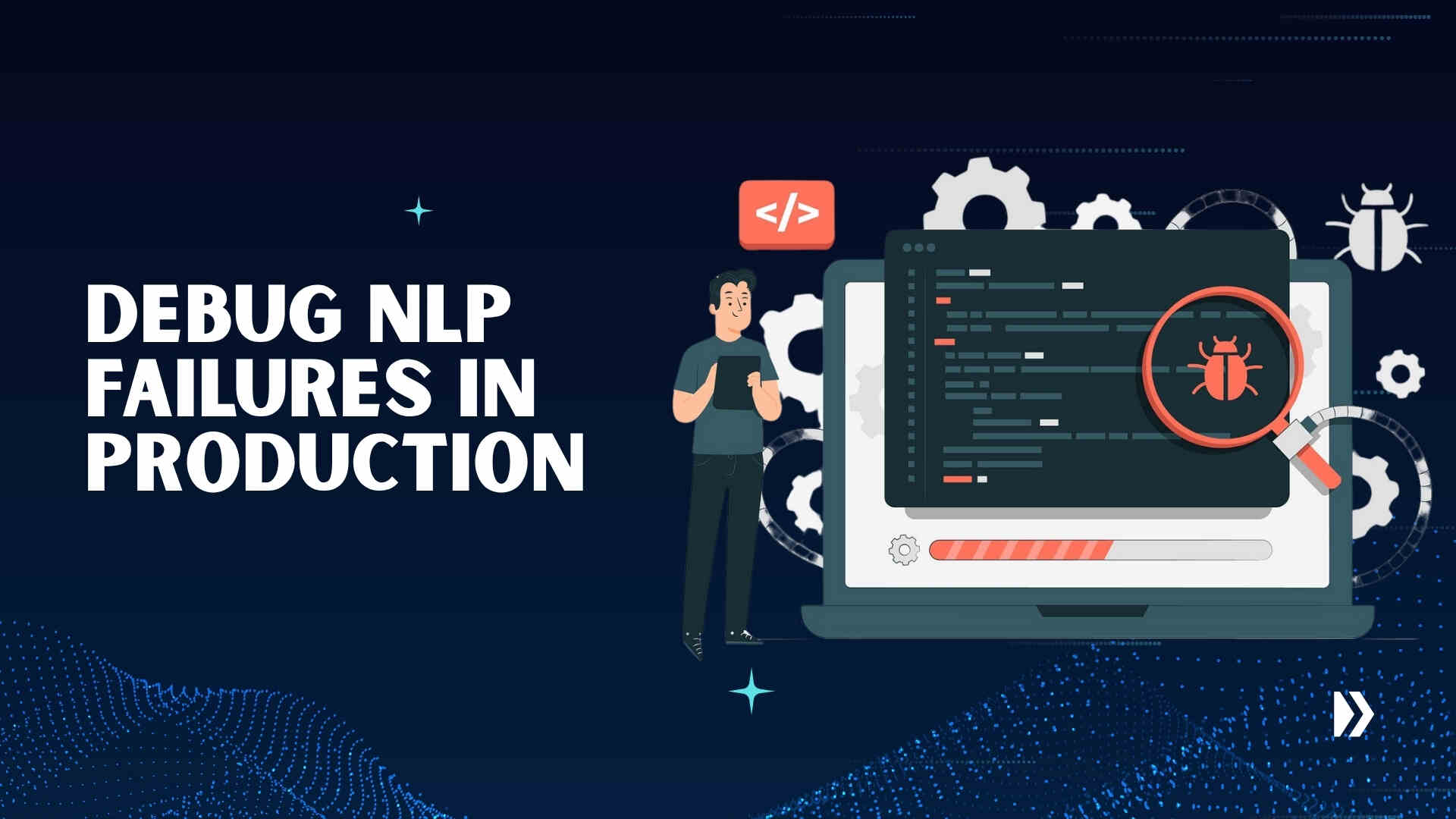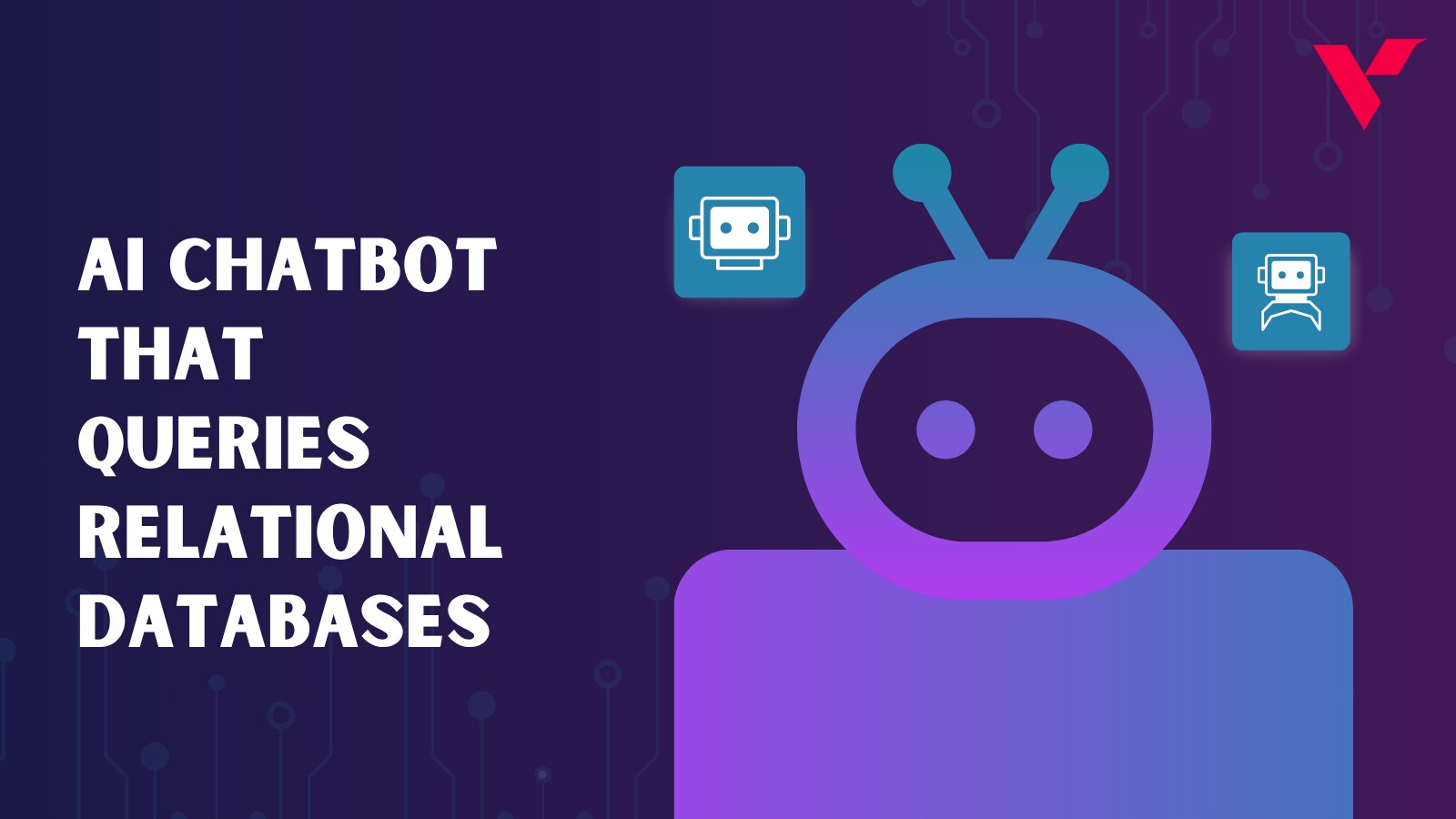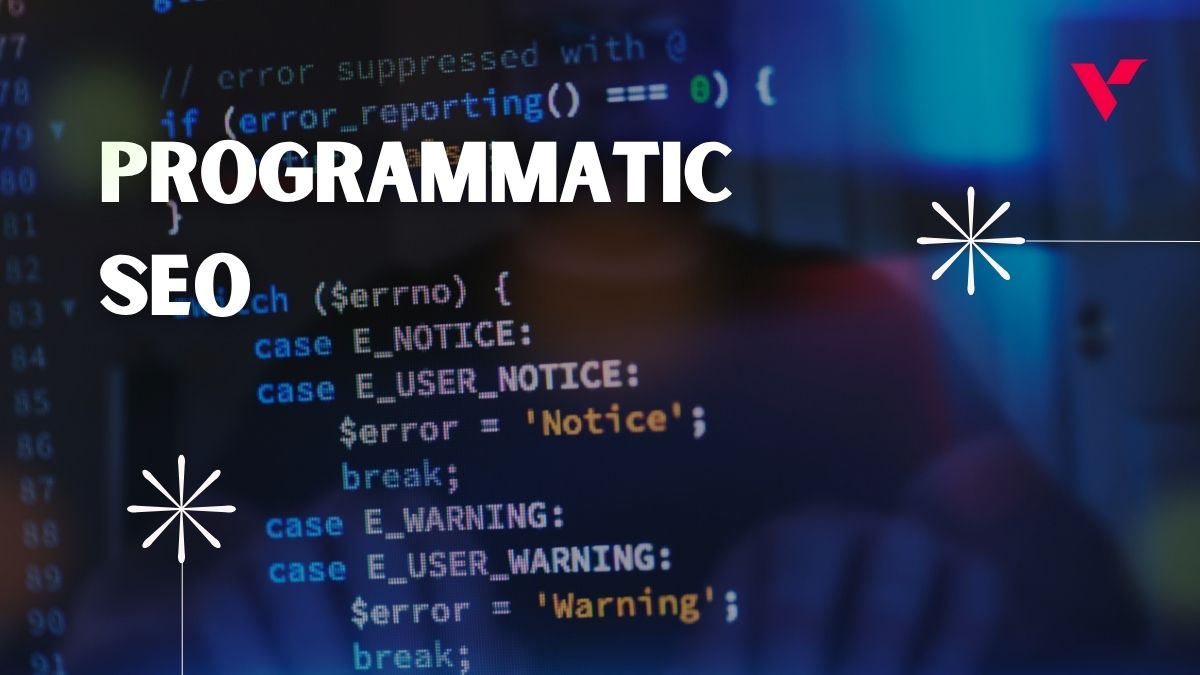Picture this: A user types, “How can I cancel my subscription?” and the chatbot joyfully responds, “I’m glad you’re upgrading!” Humorous as it may seem, in production, such misfires aren’t just embarrassing—they’re costly. These seemingly minor errors can erode user trust, damage a brand’s reputation, and create a significant burden for customer support teams. In high-stakes industries such as healthcare or finance, these failures may even expose the company to legal or compliance risks. NLP-powered chatbots have become essential across various verticals—streamlining customer support in e-commerce, enhancing patient engagement in healthcare, and facilitating 24/7 financial assistance in banking. These systems are designed to process human language, extract intent, understand context, and respond in a way that feels natural. However, achieving this level of intelligence involves a complex stack of machine learning models, data pipelines, and backend integrations. And when any part of that system misfires, the outcome can be both unpredictable and frustrating.
Despite advancements in LLMs and contextual learning, chatbots still fail in production due to noisy data, model drift, ambiguous phrasing, or simply because humans communicate in wonderfully unpredictable ways. Debugging these failures isn’t just a technical necessity—it’s a competitive advantage. A chatbot that gracefully recovers from failure or hands off to a human intelligently can often outperform a more sophisticated system that fails silently. In this post, we take a deep dive into the art and science of debugging NLP chatbots in production. We’ll cover everything from pipeline anatomy to practical tools, from real-world failure cases to cultural best practices for resilient conversational AI. If you’ve ever stared at a chatbot log wondering why it greeted a billing question with a joke, you’re in the right place.
Table of Contents
1. Anatomy of an NLP Chatbot: Knowing the Stack
To effectively debug a malfunctioning chatbot, it’s critical to first understand its architectural anatomy. Think of an NLP chatbot as a layered system, where each stage has a distinct responsibility and potential point of failure. The better you understand these layers, the easier it becomes to trace the root cause when something goes wrong.
1.1 Input Preprocessing
This is the chatbot’s first line of defense against messy user input. It involves several sub-steps:
- Tokenization: Breaking user text into meaningful units (e.g., words or phrases).
- Spell Correction: Fixing typos or casual misspellings like “cansel” instead of “cancel.”
- Normalization: Converting slang, emojis, casing, or abbreviations into a more standard format.
A failure here could cause downstream confusion. For instance, “Can I pay tomorro?” might get misunderstood if “tomorro” isn’t corrected properly.
1.2 Intent Classification
This layer determines what the user is trying to achieve. Is the query about billing, product availability, or canceling an order?
- Typically powered by supervised machine learning models or fine-tuned transformers.
- Requires diverse and well-labeled training data.
- Sensitive to overlapping phrasing between intents.
Misclassifying an intent—like tagging a refund query as a return policy request—can send the user down the wrong path and cause unnecessary friction.
1.3 Entity Extraction
Once intent is recognized, the bot identifies key variables: dates, names, locations, or product names.
- Uses NER (Named Entity Recognition) or pattern-based slot filling.
- May involve custom entities defined by business needs (e.g., product SKUs).
Even if intent is correct, missing an entity like the delivery date can break the experience.
1.4 Context Management
Natural conversations are dynamic. This layer ensures that the chatbot remembers the topic across multiple messages.
- Tracks short-term memory across turns.
- Manages long-term session memory (e.g., user preferences).
- Resets or adapts state on topic changes.
Poor context handling leads to sudden topic resets, frustrating the user. For example, a user asking follow-up questions like “What’s the return window?” after getting a refund policy might trigger an irrelevant answer.
1.5 Response Generation
Now that the bot knows what the user wants and the relevant details, it must generate a coherent response.
- Can use static templates (e.g., “Your refund will be processed in 5–7 business days.”)
- Rule-based, slot-filled messages.
- Or generative models like GPT for open-ended replies.
The challenge? Generative systems might hallucinate, while templates may sound robotic.
1.6 Backend Orchestration
The final stage involves interacting with external systems—databases, APIs, CRMs, etc.
- Executes API calls (e.g., fetch order status).
- Retrieves or updates records.
- Sends transaction confirmations.
Errors here may have nothing to do with NLP but can result in major consequences like confirming a canceled order that was never processed.
Each layer is both a contributor to the chatbot’s intelligence and a potential point of failure. A robust debugging strategy starts by isolating which stage is misfiring—whether it’s a misunderstood intent, a missing entity, a misrouted API call, or a generative model going off-script. Think of this as the foundation of your chatbot triage strategy.
2. Common NLP Failures in Production: The Rogue Gallery
Even the most well-designed NLP systems encounter unpredictable failures in live environments. Understanding the common failure categories—and their root causes—empowers teams to build smarter diagnostics and faster fixes. Here’s a breakdown of the typical NLP pitfalls you’ll face in production systems:
2.1 Intent Misclassification
- Symptom: A user asks, “Can I pay tomorrow?” and the chatbot responds with shipping information instead of payment options.
- Causes:
- Ambiguously worded queries that could match multiple intents.
- Overlapping intent labels in the training data.
- Sparse or biased training sets that neglect edge cases.
- Rapid shifts in user behavior without corresponding model updates.
Misclassified intents disrupt the conversation flow and often result in users repeating themselves, escalating frustration. Repeated errors here indicate a need for retraining with more diverse, annotated, and real-world dialogue samples.
2.2 Entity Extraction Failures
- Symptom: The user says, “I want to return my shoes ordered on January 5th,” but the bot fails to recognize the date or product.
- Causes:
- Weak generalization in entity recognition models.
- Misaligned annotation during NER training.
- Lack of synonyms or misspellings in the entity dictionary.
- Inadequate validation of extracted fields (e.g., regex for dates or phone numbers).
Missed or incorrect entities break the flow of transactional conversations and can lead to erroneous order cancellations, misrouted service requests, or even data integrity issues.
2.3 Context Drift
- Symptom: The bot forgets earlier parts of the conversation, starts answering out-of-context, or abruptly switches topics.
- Causes:
- Poor session state retention across user messages.
- Inconsistent context-scoping logic or slot-filling mechanisms.
- Lack of explicit topic tracking or contextual handoffs.
When context is lost, users must reintroduce information, undermining the “natural” aspect of natural language. This failure becomes pronounced in multi-turn dialogues or follow-up scenarios like troubleshooting steps or billing inquiries.
2.4 Unnatural or Irrelevant Responses
- Symptom: A polite customer question is answered with a tone-deaf, robotic, or even sarcastic response.
- Causes:
- Over-reliance on generative models without safety tuning or grounding.
- Missing guardrails around hallucinations, sentiment mismatches, or hallucinated facts.
- Rigid rule-based responses that fail to adapt tone or intent nuances.
While generative AI offers fluidity, without the right filters and checks, it risks generating confusing or brand-damaging replies. These errors are especially dangerous in regulated industries or emotionally sensitive contexts.
2.5 Backend or API Failures
- Symptom: The chatbot says, “Your order has been placed,” but the order service was down and never confirmed the transaction.
- Causes:
- Broken integrations, timeout errors, or dependency failures in backend services.
- Optimistic UI assumptions—confirming success before verification.
- Lack of retry mechanisms or error messaging back to the chatbot layer.
These errors often look like NLP problems but stem from infrastructure gaps. The impact can be severe: double charges, missed shipments, or incorrect customer records.
All of the above failures ultimately hurt the same things: user trust, operational efficiency, and brand experience. These aren’t just bugs; they are risk vectors that require fast detection, structured logging, and holistic debugging strategies. Fixing them isn’t just about correcting code—it’s about defending your chatbot’s credibility and value proposition.
3. Setting Up Observability: Visibility Before Recovery
When it comes to debugging NLP failures, the most important prerequisite is visibility. Without a clear line of sight into your chatbot’s internal processes, understanding what went wrong—or even that something went wrong—can be next to impossible. Observability bridges the gap between symptoms and root causes, offering teams the telemetry they need to proactively diagnose issues, monitor system behavior, and fine-tune performance in real time.
Key Signals to Monitor:
- Intent Confidence Scores: These indicate how confident the model is about its prediction. Monitoring low-confidence interactions can help flag uncertain classifications and determine when fallback logic or human handoff should be triggered.
- Entity Extraction Logs: Capturing the accuracy and consistency of recognized entities helps detect silent failures like missing dates, locations, or user-provided IDs, especially in form-based or transactional flows.
- Stage Latency Metrics: Measuring the response time for each component (e.g., NLP parsing, intent classification, API calls) can reveal performance bottlenecks and help distinguish between NLP failures and infrastructure lags.
- User Sentiment Analysis: Matching the tone of user inputs with the tone of bot responses helps ensure that the interaction feels natural and emotionally appropriate. Sudden drops in sentiment can serve as red flags for poor experiences.
- Conversation Drop-off Rates: A high abandonment rate in specific flows often indicates that the bot failed to respond effectively, got stuck, or confused the user. Tracking drop-offs by intent, entity, or session length provides actionable insights.
Recommended Tools and Platforms:
- Bot Frameworks: Platforms like Rasa X, Dialogflow CX, and Amazon Lex offer built-in analytics and live interaction debugging to observe chatbot behavior in real time.
- Logging & Metrics Infrastructure:
- ELK Stack (Elasticsearch, Logstash, Kibana): Offers customizable dashboards for viewing logs and tracing NLP performance.
- Datadog / Prometheus: Excellent for real-time metrics monitoring and alerting across microservices.
- Sentry: Useful for capturing exceptions, stack traces, and anomalies during conversations.
- Debug Dashboards: Consider building custom dashboards that integrate NLP outputs, user messages, selected intents, entity values, and downstream API statuses. Visualizing all components in a single session timeline is critical for end-to-end traceability.
Pro Tip: Always include session IDs, user IDs, and trace IDs in your logs and monitoring views. This enables precise cross-layer correlation—from frontend input to backend execution—and accelerates root cause identification.
In short, observability is not just about knowing what’s happening—it’s about making what’s happening actionable. By building a strong monitoring foundation, teams can detect issues earlier, react faster, and continuously improve chatbot reliability and user satisfaction.
4. Debugging Intent Misclassification: Fix the Misfire
When a chatbot fails to understand what the user wants, the issue often lies in incorrect intent classification. This is one of the most common (and most visible) NLP failures, and it stems from either data quality issues or improperly tuned models.
Root Causes:
- Intents that are semantically too close to each other.
- Insufficient training data for edge cases or rarely used intents.
- Outdated models that don’t account for newer user phrasing.
- Ambiguous user input is not handled via clarification steps.
Solutions and Remediation:
- Confusion Matrices: Use them during model evaluation to detect which intents the system frequently confuses. This helps you decide whether to merge intents, refine training data, or restructure your hierarchy.
- Data Augmentation: Expand your training set with diverse phrasings for each intent using paraphrasing tools like Parrot.ai, Snips NLU, or Chatette. Include regional variations, slang, and incomplete sentences to make models more robust.
- Confidence Thresholds: Set a minimum threshold below which the bot does not respond with certainty. Instead, it routes to a fallback or seeks clarification. This helps prevent confidently wrong answers.
- Disambiguation Prompts: Design prompts to nudge users toward clarification. For example, if the confidence score is low, the bot can ask, “Did you mean to ask about your billing or your shipping details?” This not only reduces errors but also enhances user experience.
Example:
A user types “I need help with charges.” The bot may confuse this between ‘Billing Issue’ and ‘Upgrade Plan.’ By applying a threshold and prompt, it responds: “Are you asking about a bill or a new plan?”—a simple fix that can greatly reduce confusion.
5. Fixing Entity Extraction Failures: Patch the Holes
Entities like dates, times, names, amounts, and product identifiers are essential for completing many tasks. When entity extraction silently fails, it often results in vague, incorrect, or incomplete responses.
Detection Techniques:
- Log Extracted Entities with Confidence Scores: Review what the NLP engine identifies in every user message and attach a confidence score to each entity. This lets you flag unreliable data before it reaches downstream systems.
- Format Validation Using Regex or Custom Validators: Ensure that phone numbers, email addresses, credit card numbers, and other fields meet expected formats. Use pattern matching to flag anomalies.
- Null Value Alerts in Critical Flows: Design checks that notify when an entity is missing in a process where it’s mandatory—such as a missing date in a refund request.
Remediation Approaches:
- Expand Dictionaries and Synonym Maps: Improve coverage by incorporating variations in spelling, slang, acronyms, and alternate terminology (e.g., “cell number” vs. “mobile phone”).
- Train with More Annotated Real-World Examples: Sample utterances from actual user logs are often more varied and ambiguous than synthetic ones. Annotate them carefully to improve model realism and robustness.
- Integrate Robust NLP Tools: Use established entity extractors like Duckling (great for time expressions) or spaCy (for general-purpose named entity recognition) to handle edge cases better.
Example:
Let’s say the user writes: “I need to return a jacket I bought on December 5th.” If “December 5th” is missed, the return request might be rejected or delayed. A smart implementation would:
- Detect the null value.
- Prompt the user: “I didn’t catch the purchase date—can you retype it?”
- Log the error for retraining and future improvement.
Effective entity extraction isn’t just about getting the data—it’s about getting the right data consistently and knowing when it goes missing.
6. Solving Context Confusion: Keep the Conversation Cohesive
A chatbot that forgets previous messages is like a waiter who keeps asking for your order—frustrating and unprofessional. Context is what enables a bot to participate in dynamic, multi-turn conversations and respond with continuity and relevance.
Common Pitfalls:
- Untracked Topic Changes: If a user switches from asking about billing to asking about returns, and the bot doesn’t reset or redirect accordingly, it will provide mismatched answers.
- Missing Session Boundaries: Stateless chatbots that treat every input in isolation fail to connect prior messages, often leading to repeated or irrelevant replies.
- Poor Dialogue History Usage: Bots that don’t leverage or persist user history (like previous interactions, preferences, or prior intents) lose the ability to personalize responses or complete long tasks.
Solutions:
- Design Recovery Checkpoints: Build logical pauses and summary nodes into conversations. If a user returns to a flow mid-way, the bot can ask, “Would you like to continue from where we left off?”
- Assign Unique Session IDs: Persist conversations across multiple turns using unique identifiers for each user. Maintain short-term memory for the session and expire it after a set inactivity period.
- Implement Topic-Switch Detection: Use intent-detection rules or NLP classifiers to detect when a user changes topics. Prompt gracefully: “Looks like you’re switching gears. Would you like to start a new query on returns?”
Stateful frameworks like Rasa Stories and Dialogflow CX are built to handle context-aware dialogue trees. Use slot-filling, contexts, and memory variables to manage continuity across turns.
7. Handling API Failures: Don’t Trust the Green Light
Many chatbot failures originate not from NLP misfires but from underlying systems—specifically, APIs. A chatbot is only as reliable as the data sources it depends on.
Example:
The bot says: “Your hotel booking is confirmed.” But the reality is: the room reservation API failed due to a timeout, and no booking occurred.
Prevention Strategies:
- Implement Retry Logic and Circuit Breakers: Adopt the Netflix Hystrix pattern or similar techniques to prevent repeated failures. Retry once or twice, and then show a graceful error message.
- Verify Before Confirming: Never show a success message unless the backend system confirms completion. Optimistic messaging can create user confusion and downstream issues.
- Log All API Responses Alongside Bot Replies: This allows engineering teams to compare what the user saw vs. what the system actually did.
Also consider real-time monitoring for key endpoints and alerting when failure rates spike. This transforms debugging from reactive to proactive.
8. Designing Fallbacks and Escalations: Fail Gracefully
Even the most intelligent systems need a way to gracefully handle the unexpected. Fallbacks and escalation paths are your chatbot’s safety net.
Best Practices:
- Fallback Intents: Define a generic response pattern when the bot doesn’t understand. For example, “I’m sorry, I didn’t quite catch that. Can you rephrase?”
- Escalation Triggers: After 2–3 consecutive fallback responses, offer to connect with a human agent. Alternatively, log the issue for asynchronous review.
- Critical Flow Escalation: For sensitive domains like banking, insurance, or healthcare, build mandatory human checkpoints into the workflow.
Example:
User: “Why did my premium go up?” Bot: “Sorry, I didn’t catch that. Are you asking about billing changes or coverage details?” (After repeated confusion) Bot: “Let me connect you to a support specialist who can better assist.”
These moments define trust—getting fallback and escalation right is often more impactful than flawless answers.
9. Tools That Make Debugging Easier
Debugging isn’t a solo effort—it requires a toolkit. Fortunately, modern frameworks come equipped with powerful capabilities for inspecting behavior in real time.
Recommended Tools:
- Rasa Interactive Learning: Allows developers to correct chatbot stories on the fly based on live input and feedback.
- Dialogflow Test Console: Lets you test intents, view detected parameters, and inspect contextual flow transitions.
- Botium Box: A robust framework for CI/CD-based automated NLP testing. Define expected outcomes and run regression tests before production releases.
- Microsoft Bot Framework Emulator: A desktop tool to simulate and test conversations locally. It displays transcripts, bot responses, and backend activity.
Custom debugging dashboards—built using tools like Kibana, Grafana, or a simple Node.js frontend—can visualize NLP inputs, parsed intents, API calls, and bot replies for each session. This traceability is essential for post-incident forensics.
10. Build a Culture of Debugging: Make It Everyone’s Job
Debugging should not be treated as a one-time event or the exclusive domain of data scientists. It must be a cross-functional discipline shared by engineers, product managers, analysts, and even QA testers.
Our 5-Step Debug Process:
- Transcript Review: Start by reviewing conversation logs flagged as failures—either manually or via anomaly detection.
- User Journey Replay: Follow the session flow across turns and across systems. Where did the intent shift? Where did data go missing?
- Pipeline Triage: Classify the issue by component—intent classification, entity extraction, context management, backend failure, etc.
- Patch or Retrain: For immediate issues, apply hotfixes or escalate for model retraining.
- Postmortem and Root Cause Analysis: Document what went wrong, how it was resolved, and what will be done to prevent recurrence.
Having shared rituals and terminology around chatbot debugging speeds up recovery and improves the quality of every release.
11. Lessons from the Trenches: Real Incidents
Here are real bugs encountered in production deployments—and what they taught us:
- “$0 Order Confirmed”: A pricing entity failed to extract, defaulted to zero, and confirmed an incorrect transaction. Lesson: Always validate critical numerical entities.
- “Sure, I’ll Cancel Everything”: The bot misinterpreted “cancel item” as “cancel account.” Lesson: Disambiguation prompts are essential.
- “Hello, I’m “: PII leaked in the response due to raw data being echoed from a backend API. Lesson: Sanitize every output.
- “Agent Unavailable During Business Hours”: An escalation API timed out, causing missed support transfers. Lesson: Monitor service health continuously.
Two Golden Rules:
- Always Log and Validate: Visibility is your strongest tool.
- Never Assume the Model is Done: NLP requires iteration and refinement—forever.
Conclusion: Failing Forward
Chatbots are not static applications—they are dynamic, learning systems that evolve over time based on the data they process and the feedback they receive. As such, failures are not only inevitable but should be expected as part of the natural development lifecycle. The real measure of chatbot maturity is not whether it avoids failure, but how it handles, recovers from, and ultimately learns from those failures.
When NLP systems fail—by misclassifying intents, missing entities, losing context, or faltering due to backend issues—the consequences can range from minor inconveniences to significant business risks. However, armed with robust observability practices, resilient fallback strategies, structured debugging workflows, and a cross-functional culture of continuous improvement, teams can convert failure into fuel for better design.
Each chatbot misfire is an opportunity to:
- Analyze patterns in user confusion
- Improve intent boundaries and disambiguation logic
- Enhance entity recognition with more diverse data
- Refactor backend reliability and communication safeguards
- Rethink escalation paths for sensitive flows
Rather than fear failure, embrace it as feedback. Teams that normalize error logging, incident retrospectives, and user feedback loops are far more likely to build conversational agents that mature gracefully in the wild.
Future Work and Innovations
The future of debugging in NLP chatbots will increasingly leverage:
- Self-healing Models: Systems that dynamically adapt to low-confidence inputs by querying real-time knowledge or seeking clarification.
- Conversational Analytics Platforms: End-to-end visibility across channels, with AI-driven anomaly detection.
- User-Centric Debugging Interfaces: Tools that let product teams replay entire sessions with full NLP traces and backend calls.
- Federated Feedback Loops: Privacy-safe mechanisms to collect performance signals from edge deployments for continuous training.
- Explainable AI for NLP: Making intent decisions and entity recognition transparent so debugging becomes easier for non-developers.
In closing, remember: The best chatbot isn’t one that never stumbles. It’s one that stumbles with situational awareness, regains balance with thoughtful design, and grows stronger from every trip.
Let your chatbot fail forward—gracefully, purposefully, and always with the user experience in mind.
About the Author
Satya Karteek Gudipati is a Principal Software Engineer with over 15 years of experience in architecting and developing intelligent enterprise systems. He specializes in AI-driven customer experiences, conversational interfaces, and cloud-native software engineering. His work spans multiple domains, including e-commerce, telecom, and fintech, with a strong focus on scalable architectures, secure chatbot design, and NLP debugging strategies. Satya has contributed to technical publications, IEEE research papers, and developer communities, advocating for ethical, resilient, and user-friendly AI applications. He is passionate about turning complex systems into meaningful user experiences through a blend of machine learning, human-centered design, and engineering rigor. You can connect with him on LinkedIn or email him @ sskmaestro@gmail.com



















